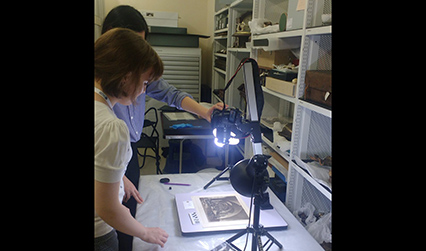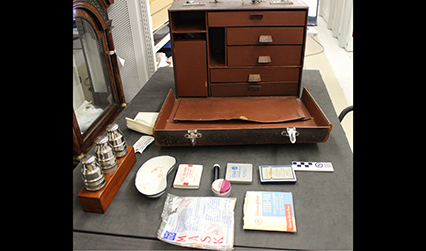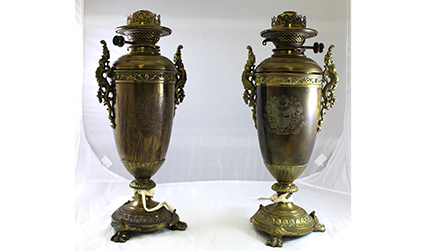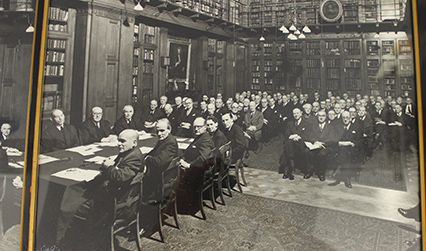Rowena Haigh and Sang A Kim are two museum studies students from the University of Leicester, who have spent two months at the RCP museum on a work placement. They have written this week’s blog post about their time working with the museum collection.
Over the past two months we have been working with the museum’s inventory collection, a group of objects that are unaccessioned – meaning they are not part of the formal museum collection. Most museums have a backlog of objects like these, and recording and researching them is an important part of museum work. This has involved handling and safely storing a range of objects, taking photographs and their physical measurements, and looking through digital and written records to find out as much information about the objects as possible. Based on our findings, some of these objects may be able to join the formal collection in the future. For this blog we have picked out a couple of the items we found the most interesting during our time in the museum.

One of the objects we found in the inventory was a leather medical case. When we first saw this case, we were very excited to open it since it looked old and mysterious. It contained 8 compartments with equipment including needles, three medicine bottles, gauze dressings, an oxygen mask and finger cots to protect patients and doctors from exposure to infection. We started by finding out which period the bag was from. These items and various inscriptions on the bag gave us clues for starting our research.

We knew the manufacturer and their address through an inscription on the lid: 50 Wigmore Street, Arnold & Sons. Arnold and Sons were surgical instrument makers, who were active from 1829 to 1928. Moreover, when we examined each item in the bag specifically, there was a date on the packet of minor sutures also made by Arnold and Sons. The date, ’13 Aug 34’, enabled us to assume that this surgical item was used around that period. Finally based on the results of our research, we could say that this bag was probably used in the 1930s. Even though we did not have specialist knowledge about medical collections and instruments, handling and researching old objects stimulated our curiosity and we were excited to find out more.

Another example of fascinating items we found during the project are a pair of brass oil lamps inscribed with the RCP coat of arms. While the connection of these lamps to the RCP was clear, researching their origins proved more difficult. The lamps were believed to have come from the RCP’s previous home in Pall Mall East, where the College lived from 1825 until moving to its current home in Regent’s Park in 1964. Research into the makers of the lamps also suggested this time period. The maker’s stamp read ‘Hinks’s Duplex Patent’, which dated the lamps from 1865 at the earliest.

Even with this knowledge, it was still a challenge for us to find out where the lamps had lived in the old headquarters. There are many photographs from the building in Pall Mall East in the museum collection, but there were no oil lamps to be seen in these pictures. Finally we found a photograph of the annual general meeting of the fellows, known as the comitia, in 1962, which was held in the library at Pall Mall East. A pair of oil lamps could be seen at either ends of a shelf in the picture, sitting underneath a portrait of John Radcliffe and alongside two small statues, all of which are part of the museum’s collection. Though they were small in the photo, it was clear that these were our lamps. It was a long process, but a rewarding one in the end as we discovered a small piece of RCP history.
We have enjoyed taking on the role of investigator for the objects we found in the RCP collection. It has been exciting to research these objects and their part in the history of medicine and the RCP.
Rowena Haigh and Sang A Kim, University of Leicester placement students
